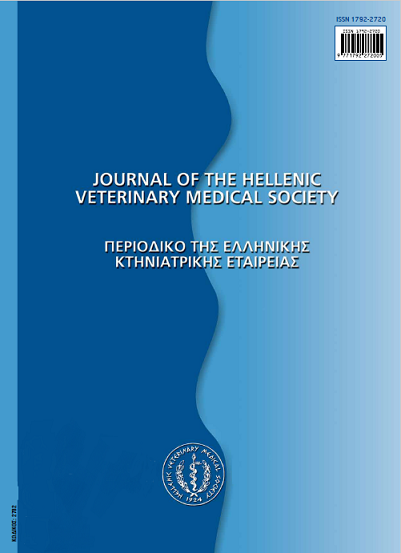Valuation of three different anaesthetic protocols on complete blood count and biochemical parameters on Wistar rats
Abstract
The objective of the current study was to determine the impact of three different anaesthetic protocols on blood and biochemical parameters. Eighteen female Wistar rats (HsdOla:WI) 3 months old, weighting 197.09 ± 7.39 g were used. Baseline blood collection was performed in all animals from the lateral coccygeal vein for evaluation of glucose. The animals were then randomly allocated to receive one of three different anaesthetic protocols: dexmedetomidine/ketamine intramuscularly (0.25 mg/kg and 50 mg/kg respectively), or isoflurane 0.2 ml on cotton inside a syringe case, or isoflurane administered by vaporiser (5% induction and 2-3% maintenance of anaesthesia, delivered in oxygen flow 1 L/min). Blood samples were collected from caudal vena cava for complete blood count and biochemical analysis, while the lung and the liver were harvested for histological evaluation. Comparison between groups, as far as complete blood count parameters is concerned, revealed statistical significant differences in red blood cells, haematocrit and haemoglobin values with lower values being observed in vaporiser anaesthesia group. Furthermore, within group comparison revealed statistical significant differences for glucose in all three groups. No evidence of inflammatory, degenerative neoplastic or toxicity related lesions were observed during histological evaluation of the lung and liver.
Article Details
- How to Cite
-
LELOVAS, P. P., STASINOPOULOU, M. S., BALAFAS, E. G., NIKITA, M. A., SISKOS, N. T., & KOSTOMITSOPOULOS, N. G. (2018). Valuation of three different anaesthetic protocols on complete blood count and biochemical parameters on Wistar rats. Journal of the Hellenic Veterinary Medical Society, 68(4), 587–598. https://doi.org/10.12681/jhvms.16057
- Issue
- Vol. 68 No. 4 (2017)
- Section
- Research Articles

This work is licensed under a Creative Commons Attribution-NonCommercial 4.0 International License.
Authors who publish with this journal agree to the following terms:
· Authors retain copyright and grant the journal right of first publication with the work simultaneously licensed under a Creative Commons Attribution Non-Commercial License that allows others to share the work with an acknowledgement of the work's authorship and initial publication in this journal.
· Authors are able to enter into separate, additional contractual arrangements for the non-exclusive distribution of the journal's published version of the work (e.g. post it to an institutional repository or publish it in a book), with an acknowledgement of its initial publication in this journal.
· Authors are permitted and encouraged to post their work online (preferably in institutional repositories or on their website) prior to and during the submission process, as it can lead to productive exchanges, as well as earlier and greater citation of published work.



